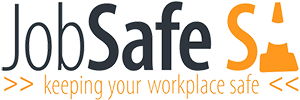Workplace Safety
A safe workplace will assist business by:
– improving worker morale, efficiency and productivity.
– reducing insurance costs
– lowering the costs associated with replacing injured or sick staff and
– improve the service delivery to your customers.
Hazard Identification
This is the process of identifying all situations or events that could eventuate in injury or illness. It generally involves consideration of the type of injury or illness possible, (for example musculoskeletal disorders) and the situations and events that could create potential for the injury or illness (for example, prolonged bending over when working from a low table).
You can identify hazards by:
- Checking records of injuries and illnesses that have occurred in the workplace.
- Talking to people.
- Reading publications such as the OHSW Regulations and Codes of Practice which identify potential hazards.
- Walking through and inspecting the workplace for situations that could cause harm.
Body Mapping Can help to identify clusters of similar health problems/hazards amongst groups of workers doing similar roles and can therefore help to identify causation. It gets workers thinking about health and safety and possible solutions instead of relying on management.
Risk Assessment
This process determines whether there are any risks associated with the identified hazards. This generally involves consideration of the nature of exposure to the hazards, including the frequency and level of exposure, pattern of exposure (continuous or intermittent) and adequacy of any existing risk control measures.
hierarchy of hazard control – The hierarchy of control is a useful tool that tells you which control measure provide a better level of risk management. The higher in the hierarchy of control, the better and more reliable the control is.
